To coincide with the cover section of Spacing’s summer 2013 issue, we bring you a series of posts by local architect Robert Moffatt that examine Modernist buildings in Toronto.
![]()
A defining characteristic of many great cities is their subway system (or metro/underground), and the primary points of contact for those using the system are its stations. From the earliest stations in the London Underground, the Paris Metro and the New York Subway to the recent creations of Santiago Calatrava, Norman Foster and Renzo Piano, a city’s subway stations are important elements of civic identity and pride for both residents and visitors.
Toronto’s relationship with its subway stations has been decidedly mixed since the system’s opening in 1954. The early stations on the Yonge, University and Bloor-Danforth lines, based on standardized designs by John B. Parkin Associates, were intended to be functional: clean-lined, durable and efficient. But by the late 1960s, despite increasingly lurid combinations of coloured wall tiles, Toronto’s stations began to seem overly utilitarian and sterile, particularly compared to the avant-garde stations of Montreal’s new Metro.
To address this aesthetic deficit, in 1974 the Toronto Transit Commission (TTC) decided to engage architects and artists in the design of the eight stations comprising its new Spadina Line. Three architectural firms were selected and assigned two stations each: Arthur Erickson Architects (Eglinton West and Yorkdale), Adamson Associates (Spadina and Glencairn) and Dunlop Farrow Aitken (Dupont and Lawrence West). The TTC retained architectural control over the St. Clair West and Wilson stations due to their technical complexities. Nine Ontario artists were selected from over 400 entrants in an open competition: Ted Bieler, Claude Breeze, Louis de Niverville, Michael Hayden, Rita Letendre, Gordon Rayner, James Sutherland, Joy Wieland and Gerald Zeldin.
The Spadina Line opened with great fanfare in January 1978. Dupont, Eglinton West and Yorkdale are generally considered the most successful stations, combining architectural verve with vibrant and well-integrated artwork. Dupont is the most fantastical of the three, a wondrous subterranean world of organically curving walls lined in shimmering melon-coloured tiles, which culminate at platform level with James Sutherland’s enormous glass-mosaic murals of psychedelicized plant life. Station entrances are Plexiglas bubbles framed in bright orange metal, startling insertions in their drab, workaday surroundings; hulking black steel gates by Ron Baird guard the electrical substation adjoining the northwest entrance.
Viewed from Eglinton Avenue, Arthur Erickson’s Eglinton West station appears as an octagonal glass-walled pavilion, topped with a concrete waffle-slab roof and pyramidal skylights. Once inside, though, a series of terraced staircases descend through the station to platform level, which features Gerald Zeldin’s well-loved Summertime Streetcar murals of abstracted TTC streetcars. The station’s refined details and limited materials palette of concrete, glass, stainless steel and variegated orange brick contribute to a visual serenity that counters the clamour of trains, buses and people.
Yorkdale station, also by Erickson, is a striking visual metaphor for speed and motion, a long, slim, stainless-steel-clad extrusion punched with oval windows like a subway car and capped by a vaulted glass roof running the entire length of the station. The slender steel roof arches once supported Michael Hayden’s stunning Arc en Ciel, a 570-foot-long light sculpture of neon tubes that pulsated with the colours of the spectrum in sequence with the arrivals and departures of the trains below. A particularly effective integration of art and architecture, the sculpture was unfortunately removed in the early 1990s for lack of maintenance funds. The same fate befell Rita Letendre’s Joy, a painted-glass skylight over the Glencairn station platform, which faded from sun exposure and was replaced by clear glass.
Above: Yorkdale Glencairn station when it opened; Below: Yorkdale station platform today
Above and Below: Spadina station on University-Spadina line
Below: St. Clair West
Below: Lawrence West
Below: Wilson
LIST OF DESIGNERS & ARCHITECTS:
Spadina: Adamson Associates; Morning Glory by Louis de Niverville (porcelain enamel mural) and Barren Ground Caribou by Joyce Wieland (fabric quilt)
Dupont: Dunlop Farrow Aitken; Spadina Summer Under All Seasons by James Sutherland (glass mosaic tile murals)
St. Clair West: TTC architects; Tempo by Gordon Rayner (porcelain enamel mural)
Eglinton West: Arthur Erickson Architects; Summertime Streetcar by Gerald Zeldin (porcelain enamel murals)
Glencairn: Adamson Associates; Joy by Rita Letendre (painted glass skylight, removed)
Lawrence West: Dunlop Farrow Aitken; Spacing…Aerial Highways by Claude Breeze (ceramic tile mural)
Yorkdale: Arthur Erickson Architects; Arc en Ciel by Michael Hayden (neon lightwork, removed)
Wilson: TTC architects; Canyons by Ted Bieler (aluminum wall relief).
![]()
You can read more posts on Modernism by Robert on his blog Modern Toronto

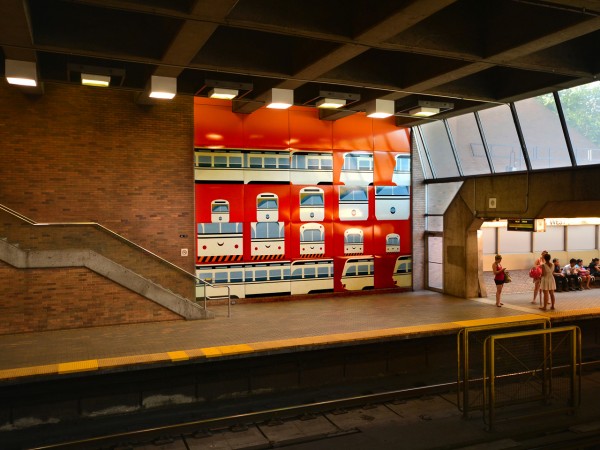

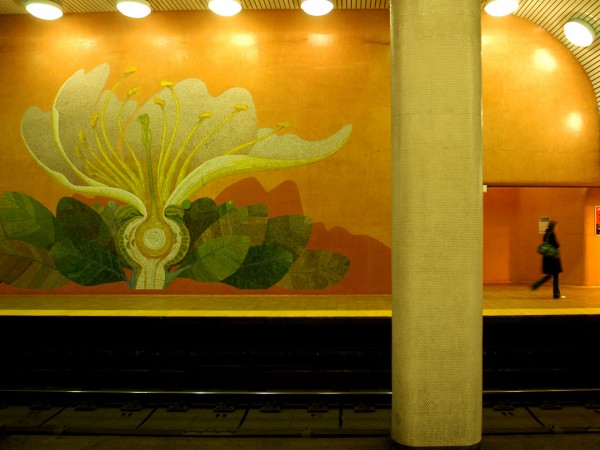
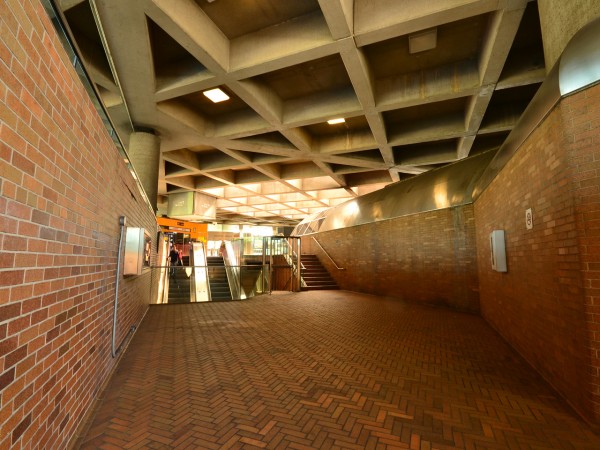
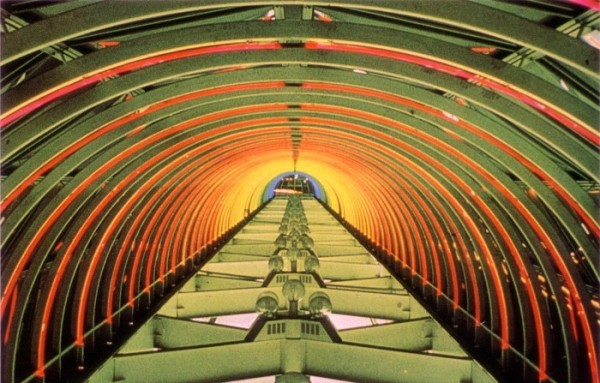
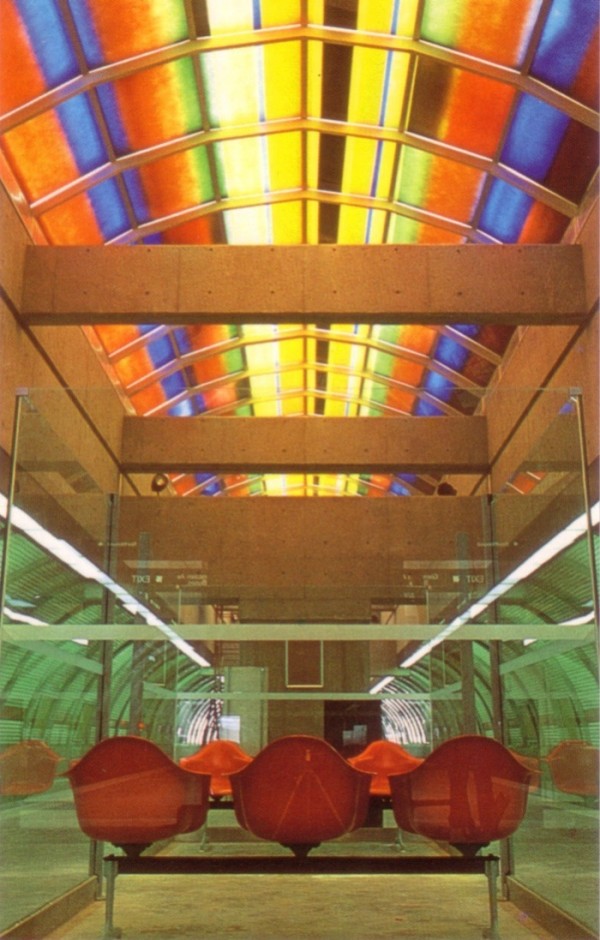
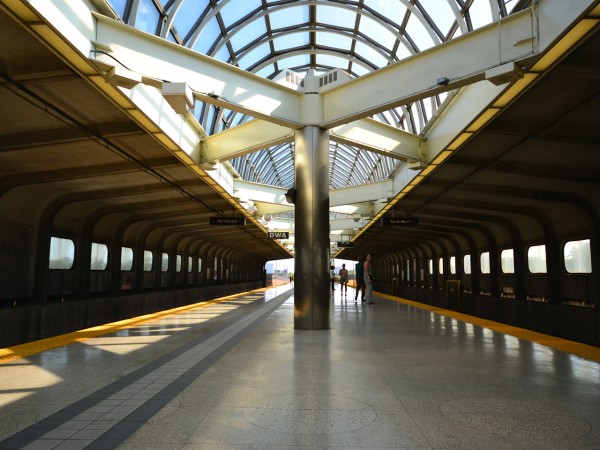
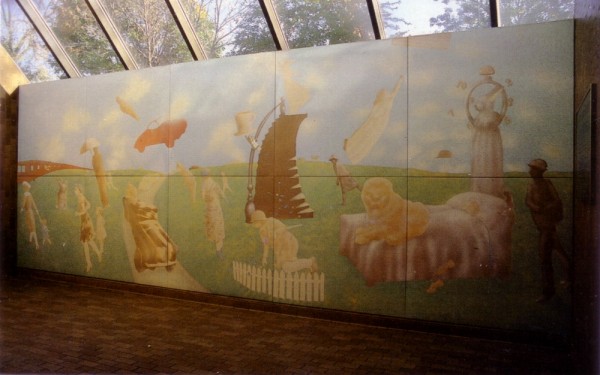
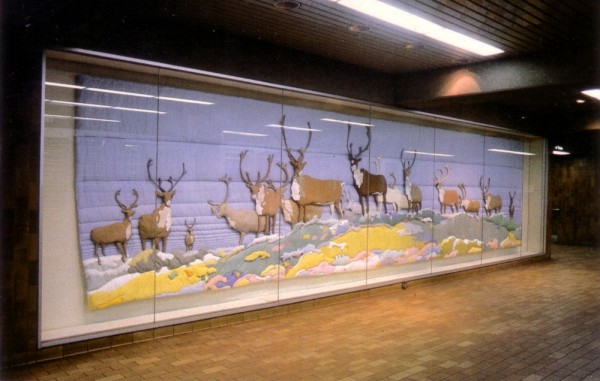
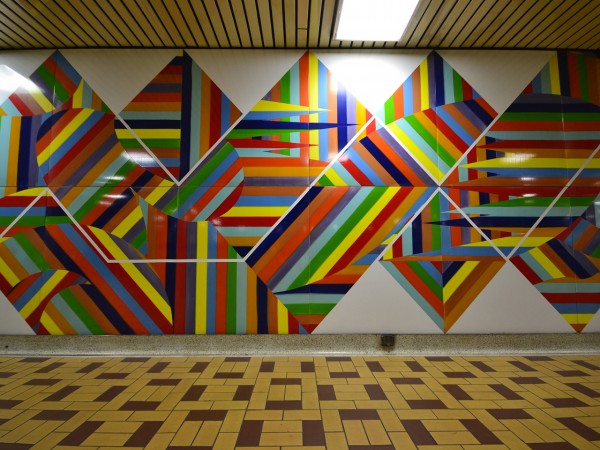
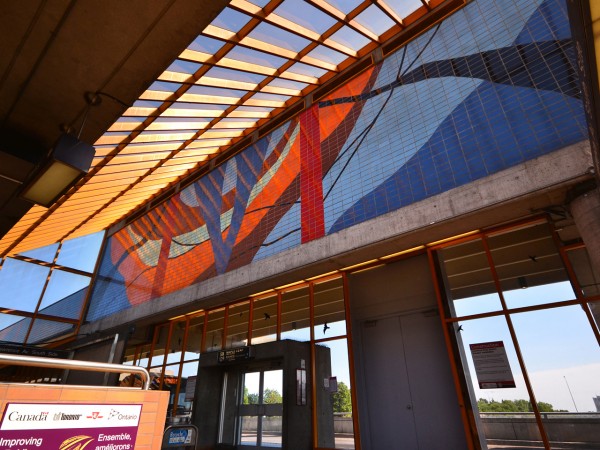
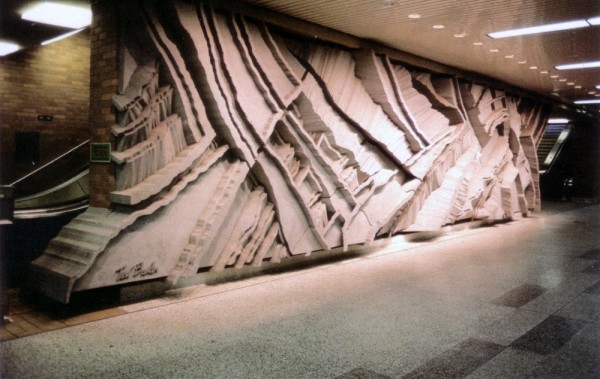



5 comments
I would love to see Arc En Ciel back in place. I missed it the first time around!
The photo implied as “Yorkdale station when it opened” is in fact Glencairn (w/the now-gone Letendre)–the Yorkdale is above that one. [ EDITOR’S NOTE: this error has been fixed. ]
Sadly, Dupont’s plexiglass bubbles have been lately replaced w/flat versions within the original bubble frames.
The lights at Yorkdale made that station – and arriving/departing there – an event. It did (though horizontally), with all success, what the CN Tower’s LED lighting refit mostly fails to do.
Art and architecture can really enliven a commute. I much prefer the Spadina line to the Bloor-Danforth line for the unique stations. Subway stations are important public spaces for the city, through which millions of people pass each day. When people travel on streetcars and buses, they see interesting architecture and street life in the public realm through the windows. Unique subway station architecture is what makes the scenery from the subway train interesting. With most of the Spadina line stations from 1978, the TTC finally got it right. Officials from both Montreal and Washington DC had visited in the 1960s and remarked that they didn’t want such a bland and utilitarian system as ours.
We have an opportunity now with the billions we’re spending on transit to get it right. It doesn’t have to cost more. The new Spadina line stations will in fact be excellent, judging by the renderings. The Eglinton Crosstown, the Relief Line, the Scarborough RT replacement (with a rebuilt Kennedy Station) and renovations of existing stations all present opportunities to create spectacular public spaces with bold architecture and art like in Montreal, Washington, Moscow and many other great cities. It really is regrettable just how generic and cheap a lot of our stations look outside of the Spadina line, for the most part. Let’s get it right moving forward. A lot of people have spoken out on the issue at the Eglinton Crosstown open houses, but Metrolinx and our politicians always need reminders. Once we build these stations, we’re stuck with the design for generations. We need to get it right the first time around.
I would love it if the owners of Yorkdale would pay the cost of refitting L’arc en ciel into Yorkdale station … as a community gift connected to their expansion plans.
I believe new LED technology would cost a lot less to install and maintain than the old lights and would last longer too.